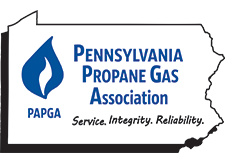Misleading stories about gas stoves and indoor air quality have dominated the news cycle lately.
Here are a few points to consider:
- The Environmental Protection Agency does not list gas stoves as a significant contributor to adverse air quality or health hazards.
- Some research studies find that gas stoves adversely impact indoor air quality, others find electric ranges have a greater adverse impact.
- The Stanford study’s findings are based on an extremely small sample size and unrealistic cooking conditions and doesn’t provide a clear picture of NOx emissions and particulate matter generated from electric cooking.
- Catalyst Environmental Solutions and The Lancet Respiratory Medicine are just a few examples of third-party researchers who have reviewed these issues and determined little to no health impacts from the use of gas stoves.
- GTI Energy finds electric ranges have a greater adverse impact than gas ranges.
Ultimately, further study is needed for all.
- The act of cooking itself impacts air quality, regardless of the energy that powers the stove.
- Proper ventilation using a hood and even opening a window is the best solution to maintaining indoor air quality.
- Engaging a qualified technician to install and perform regular service of the stove is essential to ensuring safe operation of the appliance.
- Heating oil at the appropriate temperature also aids in maintaining air quality.
- The safety of appliances is measured in ways other than their impact on indoor air quality. For instance, a 2020 study by the National Fire Protection Association (NFPA) found that electric ranges cause household fires at a rate 2.6 times greater than gas ranges; civilian injuries at a rate 4.8 times higher; and civilian deaths at a rate 3.4 times higher.
- There are inherent risks to operating any appliance in the home whether powered by electricity, natural gas, or propane. Following common sense safety measures will ensure their safe use for all.

 Mower Equipment
Mower Equipment